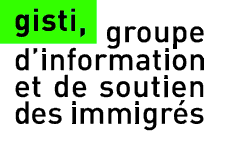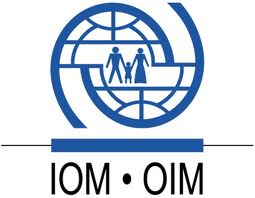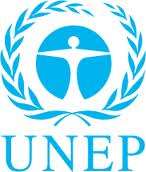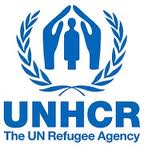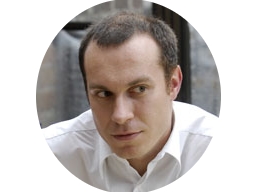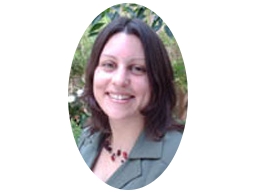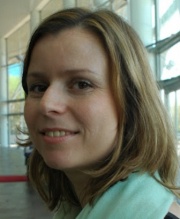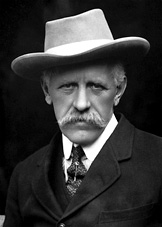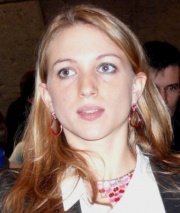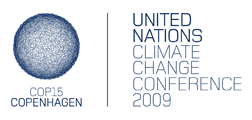The glossary gives you some quick information about the institutions, organizations, experts and and specific terms you can find in the website. Clicking on a term leads you directly to the desired entry.
Established in 1966, the ADB is a major source of development financing for the Asia and Pacific region. With more than $17.5 billion in approved financing, the ADB, in partnership with member governments, independent specialists and other financial institutions – is focused on delivering projects that create economic and development impact. http://www.adb.org/
Based in Washington D.C., CDG is an independent, nonpartisan, and nonprofit think tank working to reduce global poverty and inequality. CGD conducts research and analysis on a wide range of topics related to how rich country policies impact people in the developing world. http://www.cgdev.org/
This organization aims to reduce the impact of climate change by promoting sustainable business practices. Its cornerstone is a code of standards for supply chains, designed to build working relationships which benefit buyers, sellers and the environment.
http://www.gscpnet.com/
An independent non-profit organization providing information and support to immigrants. http://www.gisti.org/index.php
IDDRI is a research institute based at Sciences Po. It works to engage researchers, policy makers and representatives from organizations in a dialogue about current international issues. In doing so, the IDDRI occupies a space between legislation and action.
http://www.iddri.org/
Established in 1970 and based in Italy, the Institute works closely with leading international organizations to provide guidance for legal issues in international law and human rights. The Institute conducts training sessions for lawyers and coordinates policy responses. It also hosts researchers investigating current issues in the subjects of migration, refugee status, public health and development.
http://www.iihl.org/Default.aspx?pageid=page1
An intergovernmental organization established in 1951, IOM is committed to the principle that humane and orderly migration benefits migrants and society. The IOM is composed of 146 Member States and 98 observers, it has more than 450 field locations and more than $1.3 billion in expenditures in 2011. http://www.iom.int/jahia/jsp/index.jsp
“National adaptation programmes of action (NAPAs) provide a process for Least Developed Countries to identify priority activities that respond to their urgent and immediate needs to adapt to climate change – those for which further delay would increase vulnerability and/or costs at a later stage”. NAPAs are coordinated by the United Nations Framework Convention on Climate Change. http://www.unfccc.int/national_reports/napa/items/2719.php
The UNEP is the environmental arm of the United Nations, their mission is “to provide leadership and encourage partnership in caring for the environment by inspiring informing and enabling nations and peoples to improve their quality of life without compromising that of future generations.” http://www.unep.org
Also known as The UN Refugee Agency is a United Nations agency mandated to protect and support refugees at the request of a government or the UN itself and assists in their voluntary repatriation, local integration or resettlement to a third country. Its headquarters are in Geneva, Switzerland and is a member of the United Nations Development Group. The UNHCR has won two Nobel Peace Prizes, once in 1954 and again in 1981. The agency is mandated to lead and co-ordinate international action to protect refugees and resolve refugee problems worldwide. Its primary purpose is to safeguard the rights and well-being of refugees. It strives to ensure that everyone can exercise the right to seek asylum and find safe refuge in another state, with the option to return home voluntarily, integrate locally or to resettle in a third country. http://www.unhcr.org/cgi-bin/texis/vtx/home
Conventions and Conferences
CCDP argues for a universal treaty to define what is an environmental migrant. http://www.ccdpconvention.com
2010 World People’s Conference on Climate Change and the Rights of Mother Earth in Cochambaba, Bolivia.
The Green Climate Fund is a tool built in the frame of the UNFCCC in order to transfer money from the developed to the developing countries with the objective to raise $100 billion by 2020. Part of this money is supposed to help climate refugees.
Someone who is forced to move out from where he/she lives because of extreme weather disasters or deteriorating climate conditions.
A plan for humanitarian organizations responding to emergencies. It is designed to reduce inefficiencies in rescue efforts and improve communication and service delivery among agencies. Regions of the world are divided into clusters. In an emergency, natural or man-made, the clusters follow the approach's pre-established hierarchy of responsibility.
A term used in Bangladesh to describe residents of islands in river plains, which a known as chars. Because the water level is frequently changing, char land alternates between high-water floods and low-water dry spots. These changes make it difficult to farm the land. As a result, char dwellers often relocate many times throughout the year.
Someone who chooses to leave because of environmental factors.
Someone who is forced to leave because of environmental factors.
Someone who is displaced due to environmental factors which negatively impact his or her livelihood. Such displacement can be cross-border in nature but is frequently internal.
Someone who is forced to flee his or her home but who remains within his or her country’s borders. They are often referred to as refugees, although they do not fall within the current legal definition of a refugee.
Statelessness is alegal concept describing the lack of any nationality. It is the absence of a recognized link between an individual and any state. A de jure stateless person is someone who is “not considered as a national by any state under the operation of its law.” A de facto stateless person is someone who is outside the country of his or her nationality and is unable or, for valid reasons, unwilling to avail him- or herself of the protection of that country.This can be a result of persecution, in which case there is an overlap with the definition of a refugee, but it can also be a consequence of lack of diplomatic relations between the state of nationality and the state of residence.
In 1951 a Untied Nations convention approved the following definition of a refugee:
"A person who owing to a well-founded fear of being persecuted for reasons of race, religion, nationality, membership of a particular social group or political opinion, is outside the country of his nationality and is unable or, owing to such fear, is unwilling to avail himself of the protection of that country; or who, not having a nationality and being outside the country of his former habitual residence as a result of such events, is unable or, owing to such fear, is unwilling to return to it."
This definition continues to serve as the official guideline and base for governments and international organizations dealing with refugees and related issues.
This amendment, adopted by the United Nations in 1967, removed the geographic and time-related restrictions in the 1951 Convention. Refugees can now claim status as a result of events before or after 1951, in Europe or elsewhere.
Propositions for an amendment to the 1951 Geneva Convention Relating to the Status of Refugees that would extend the mandate of the UN refugee regime to include climate refugees.
A statement from the Council which recognizes "the gaps in international law regarding human rights and refugees, who left without adequate legal protection, and categories of people forced to flee environmental disaster within their country or abroad, including Europe." It calls for "a dialogue between its member states to raise awareness of the existence and extent of problems related to 'environmental migration' and to encourage concerted action".
In 2010, the parties to the United Nations Framework Convention on Climate Change met in Cancun. They created a document now known as the Cancun Adaptation Framework, addressing the need for an adaptive response to climate change. In this document, Paragraph 14 "Invites all Parties to enhance action on adaptation under the Cancun Adaptation Framework, taking into account their common but differentiated responsibilities and respective capabilities, and specific national and regional development priorities, objectives and circumstances". The paragraph then lists measures in sections. Section (f) encourages "measures to enhance understanding, coordination and cooperation with regard to climate change induced displacement, migration and planned relocation, where appropriate, at the national, regional and international levels".
Mr. Èdes is director, Poverty Reduction at the Gender and Social Development Division at Asian Development Bank, Philippines. He has held a variety of positions in the fields of international development, communications, and public policy.
Mr. El-Hinnawai is a Research Professor of Natural Resources and the Environment at the National Research Centre in Cairo. While working with the United Nations Environment Programme in 1985, he published research that contains what is usually regarded as one of the first documented uses of the term "environmental refugee".
A research fellow at the Institute for Sustainable Development and International Relations (IDDRI), Francois Gemenne also teaches the international politics of climate change and the governance of migration at Sciences Po Paris, the University of Paris 13 and the Free University of Brussels.His research deals with populations displaced by environmental changes and the policies of adaptation to climate change. He has conducted field studies in New Orleans (United States) after hurricane Katrina, and in the archipelago of Tuvalu, threatened by sea-level rise, as well as in China, Central Asia and Mauritius.
Ms. Dun is a PhD candidate at the School of Geosciences, University of Sydney. Her PhD research is examining what role environmental change plays in migration decisions of people living in areas affected by environmental changes. In particular, her PhD focuses on the links between flooding, saline intrusion and migration in the Mekong Delta, Vietnam.
An internationally recognized immigration expert, Ms. Ionesco is policy researcher at the International Organization for Immigration (IOM).
A Norwegian explorer, scientist, diplomat, humanitarian and Nobel Peace Prize laureate. In his youth he was a champion skier and ice skater and later on devoted himself primarily to the League of Nations, following his appointment in 1921 as the League’s High Commissioner for Refugees. In 1922 he was awarded the Nobel Peace Prize for his work on behalf of the displaced victims of the First World War and related conflicts. Among the initiatives he introduced was the “Nansen passport” for stateless persons, a certificate recognised by more than 50 countries. He worked on behalf of refugees until his sudden death in 1930, after which the League established the Nansen International Office for Refugees to ensure that his work continued.
Alice Baillat is in her second year of doctorate in International Relations at Sciences Po. Paris. She is also an invited researcher at the Center of Sustainable Development, at the University of Liberal Arts Bangladesh.
Professor McAdam is a member of the Faculty of Law at the University of New South Wales. With a specialization in international refugee law, her work focuses on available legal protections for people affected by climate change and displacement. As an author, her most publication is Climate Change, Forced Migration and International Law (Oxford University Press, Oxford 2012).
Ms. Cournil teaches Public Law at the Institute for International and Strategic Relations. She specializes in asylum and migration politics.
Mr. Nouaillas is a journalist for La Vie. He specializes in reporting on environmental issues.
Copenhagen hosted the UN Climate Change Conference in 2009. Known as the COP15, this conference produced agreements which laid the groundwork for the language adopted in the Cancun Adaptation Framework in 2010.
http://unfccc.int/meetings/copenhagen_dec_2009/meeting/6295.php
In 1992 in Rio de Janeiro, the United Nations Conference on Environment and Development held the first donor-scale event dedicated to sustainable development and the environment. In 2012, the event will return to Rio to mark its twentieth anniversary. The event plans to focus on seven key areas, all of which have some effect on environmental migration. Among the most relevant to be discussed are food security, the health of the ocean, and the challenges of urban growth.
http://www.earthsummit2012.org/
Organizations:
Asian Development Bank
Center for Global Development:
Global Social Compliance Programme:
Groupe d’information et de soutien des immigrés (GISTI):
Institut du développement durable et des relations internationales (IDDRI):
International Institute of Humanitarian Law:
International Organization for Migration (IOM):
National Adaptation Programs of Action (NAPA):
United Nations Environmental Programme (UNEP):
United Nations Human Rights Commission (UNHCR):
Convention for Climate Change Displaced People (CCDP):
Cochambaba 2010:
Green Climate Fund:
Definitions
Climate Refugee:
Cluster Approach:
Char Dweller:
Ecological Migration:
Ecological Refugee:
Environmentally Displaced:
Internally Displaced Person:
Stateless Persons:
Legal Texts:
The 1951 Geneva Convention:
The 1967 Protocol:
Limoges 2005 & Maldives 2006 Amendments:
The 2009 Council of Europe Resolution:
Paragraph 14, Section (f) of the UNFCCC Cancun Agreements:
Experts and Researchers
Bart Edes:
Essam El-Hinnawi:
Francois Gemenne:
Olivia Dun:
Dina Ionesco:
Fridtjof Nansen:
Alice Baillat:
Jane McAdam:
Christel Cournil:
Olivier Nouaillas:
Conferences:
The COP15:
Earth Summit 2012 / Rio+20:





